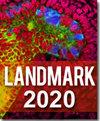EGCG 通过 AMPK/ULK1 通路恢复角质细胞自噬功能,促进糖尿病伤口愈合
IF 3.1
4区 生物学
Q2 Immunology and Microbiology
引用次数: 0
摘要
背景:伤口愈合延迟是糖尿病(DM)患者的常见问题,与角化细胞自噬受损有关。表没食子儿茶素没食子酸酯(EGCG),一种儿茶素,已被证明可以促进糖尿病伤口愈合。本研究旨在探讨EGCG对糖尿病创面愈合的作用机制。方法:制备高糖(HG)诱导的角质形成细胞和链脲佐菌素(STZ)诱导的DM大鼠,并干预EGCG,观察其体内和体外治疗作用。利用AMPK抑制剂化合物C来确定EGCG是否通过AMPK/ULK1途径发挥其治疗作用。结果:体外,EGCG通过增加LC3II/LC3I、Becline1和ATG5水平,降低p62水平,改善hg诱导的角化细胞自噬损伤。机械上,EGCG激活AMPK/ULK1通路,从而通过AMPK和ULK1的磷酸化促进角化细胞自噬。值得注意的是,EGCG促进了hg处理的角质形成细胞中C-C基序趋化因子配体2 (CCL2)的增殖、迁移、合成和释放。此外,EGCG间接促进了成纤维细胞的活化,如α -平滑肌肌动蛋白(α -SMA)和I型胶原蛋白水平的增加。在体内,EGCG促进DM大鼠伤口愈合,主要是通过减少炎症浸润和增加肉芽组织来促进伤口上皮化。此外,EGCG还能促进DM大鼠新生上皮组织中ATG5、KRT10、KRT14、TGF-β 1、Collagen I和α -SMA的表达。然而,化合物C的使用逆转了EGCG的作用。结论:这些发现表明EGCG通过AMPK/ULK1通路恢复角质细胞自噬,促进糖尿病创面愈合。本文章由计算机程序翻译,如有差异,请以英文原文为准。
EGCG Restores Keratinocyte Autophagy to Promote Diabetic Wound Healing through the AMPK/ULK1 Pathway
Background : Delayed wound healing, a common problem in patients with diabetes mellitus (DM), is associated with impaired keratinocyte autophagy. Epigallocatechin gallate (EGCG), a catechin, has been proven to promote diabetic wound healing. This study aims to explore the therapeutic mechanism of EGCG on diabetic wound healing. Methods : High glucose (HG)-induced keratinocytes and streptozotocin (STZ)-induced DM rats were prepared and intervened with EGCG to examine its therapeutic effects in in vivo and in vitro settings. The AMPK inhibitor, Compound C, was utilized to determine whether EGCG exerted its therapeutic effects through the AMPK/ULK1 pathway. Results : In vitro , EGCG improved HG-induced autophagy impairment in keratinocytes by increasing LC3II/LC3I, Becline1, and ATG5 levels and decreasing p62 level. Mechanically, EGCG activated the AMPK/ULK1 pathway, thereby promoting keratinocyte autophagy through the phosphorylation of AMPK and ULK1. Notably, EGCG promoted the proliferation, migration, synthesis and release of C-C motif chemokine ligand 2 (CCL2) in HG-treated keratinocytes. Furthermore, EGCG indirectly promoted the activation of fibroblasts, as evidenced by increased alpha-smooth muscle actin ( α -SMA) and Collagen I levels. In vivo , EGCG promoted wound healing in DM rats, primarily by reducing inflammatory infiltration and increasing granulation tissue to promote wound epithelialization. Besides, EGCG promoted ATG5, KRT10, KRT14, TGF-β 1, Collagen I, and α -SMA expressions in the neonatal epithelial tissues of DM rats. However, the use of Compound C reversed the effects of EGCG. Conclusions : These findings indicated that EGCG restored keratinocyte autophagy to promote diabetic wound healing through the AMPK/ULK1 pathway.
求助全文
通过发布文献求助,成功后即可免费获取论文全文。
去求助
来源期刊

Frontiers in Bioscience-Landmark
生物-生化与分子生物学
CiteScore
3.40
自引率
3.20%
发文量
301
审稿时长
3 months
期刊介绍:
FBL is an international peer-reviewed open access journal of biological and medical science. FBL publishes state of the art advances in any discipline in the area of biology and medicine, including biochemistry and molecular biology, parasitology, virology, immunology, epidemiology, microbiology, entomology, botany, agronomy, as well as basic medicine, preventive medicine, bioinformatics and other related topics.
 求助内容:
求助内容: 应助结果提醒方式:
应助结果提醒方式:


